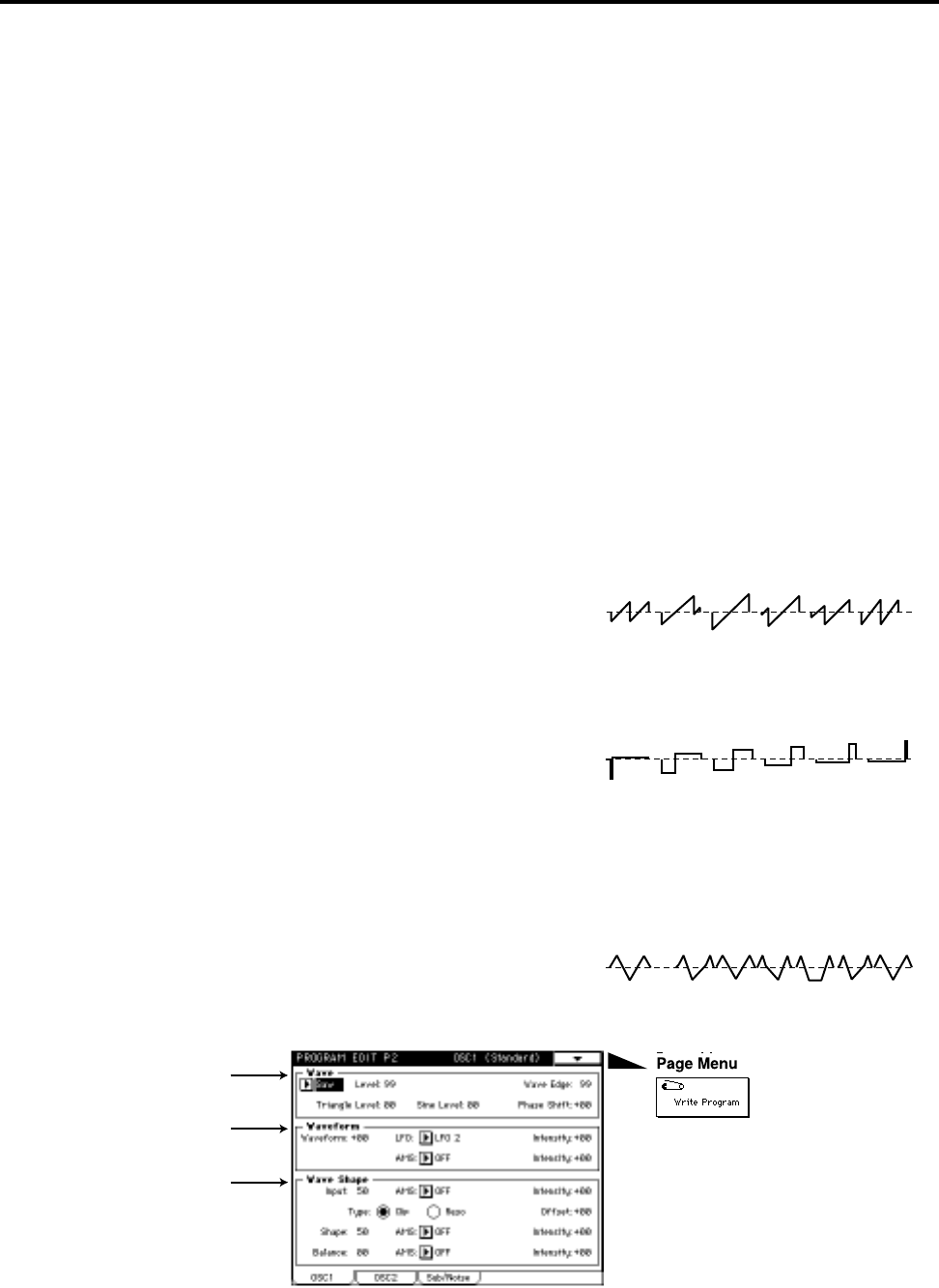
Program Edit P2
Here, you can make settings for each oscillator type. The oscillator type is specified in “1-2a: Multi
Oscillator Synthesis Setup” of “1-2: OSC Basic.”
The display pages that appear will depend on the selected oscillator type.
2–1: OSC
01: Standard
This oscillator produces the waveforms used by an analog synthesizer (sawtooth wave, pulse wave,
triangle wave) and sine wave. Sawtooth wave, pulse wave and triangle wave waveforms can be
modified using waveform modulation. You can specify either sawtooth wave or pulse wave as the
main waveform, and mix triangle wave or sine wave with this for output. The level of these three
waveforms can be adjusted independently. In addition, wave shaping can be applied to the output of
this oscillator.
Waveform modulation
Pulse width modulation (PWM) on an analog synthesizer produces time-varying change in the pulse width of a pulse
wave. The waveform modulation provided by the MOSS-TRI option is an extension of this, which varies not only the
pulse width but also the waveform of a sawtooth wave or triangle wave. Waveform modulation will affect the various
waveforms as follows.
Sawtooth wave
Waveform modulation will modify a sawtooth waveform as
shown below, creating time-variant change in the sound.When
modulation is 0, the basic sawtooth waveform will be produced,
and when it is 99, a sawtooth wave of double the frequency will
be produced. If the modulation value is a negative number, a
different effect will result than with positive settings.
Pulse wave
Waveform (pulse width) modulation will modify a pulse
waveform as shown below, creating time-variant change in the
sound. When modulation is 0, a square wave will be produced,
and when it is 99, the pulse width will be 0, meaning that there
will be no sound. If the modulation value is a negative number,
the results will be inverted.
Triangle wave
Waveform modulation will modify a ramp wave as shown below, creating time-variant change in the sound.
When modulation is 0, a triangle wave will result, and as the modulation value increases, the waveform will
become a ramp wave (a waveform in which the slope is broken in two). At a modulation value of 50, a trapezoidal
wave will result, and at a value of 99 the waveform will once again
be a triangle wave. If the modulation value is a negative number,
the results will be inverted.Compared to sawtooth or pulse waves,
this waveform produces a strong fundamental with fewer
overtones, making it particularly suitable for bass sounds etc.
-99 -33 0 33 66 99
-98 -33 0 33 66 98
-99 -25 0 25 50 75 99
2–1a
2–1b
2–1c
2:1 OSC 1 (01: Standard)
